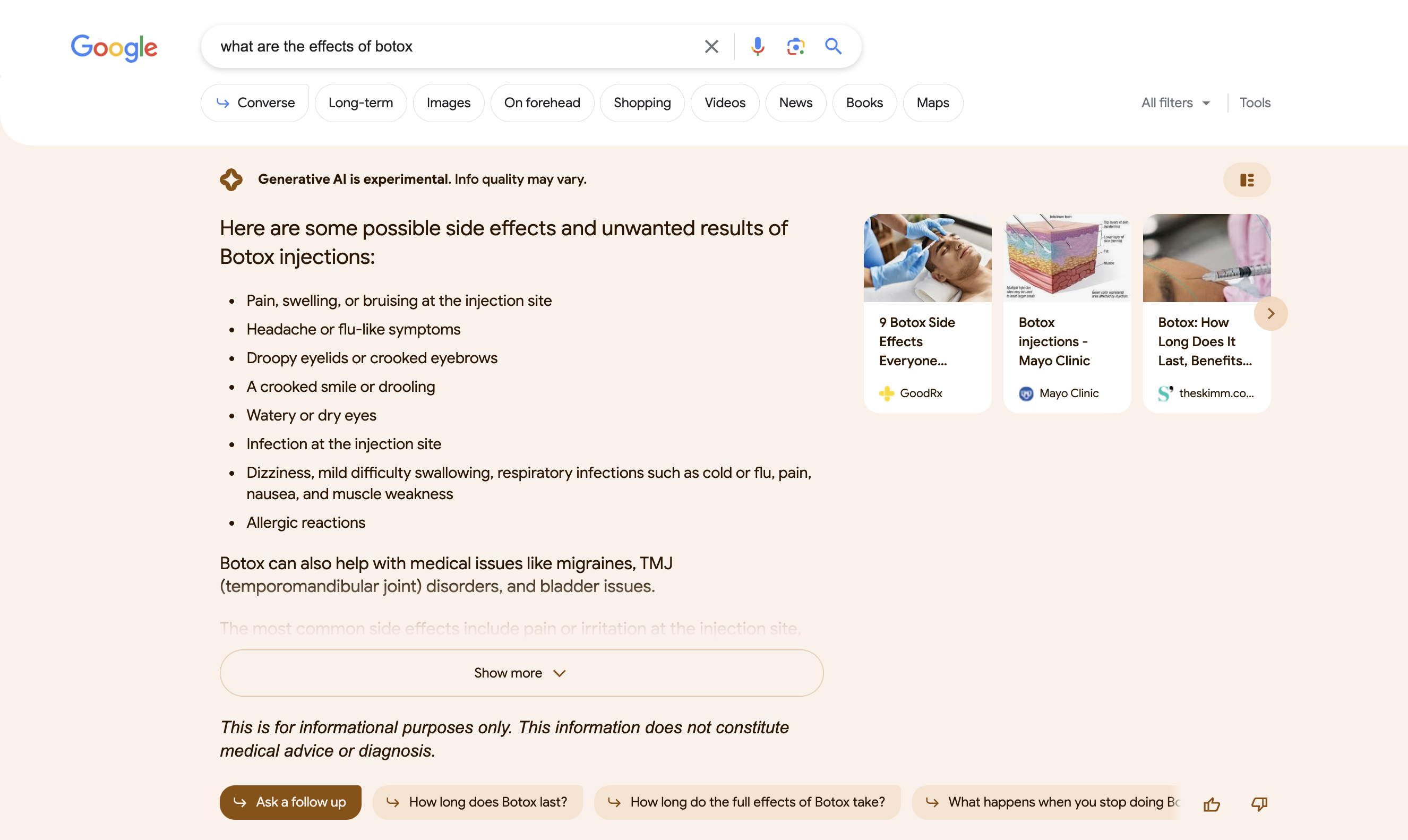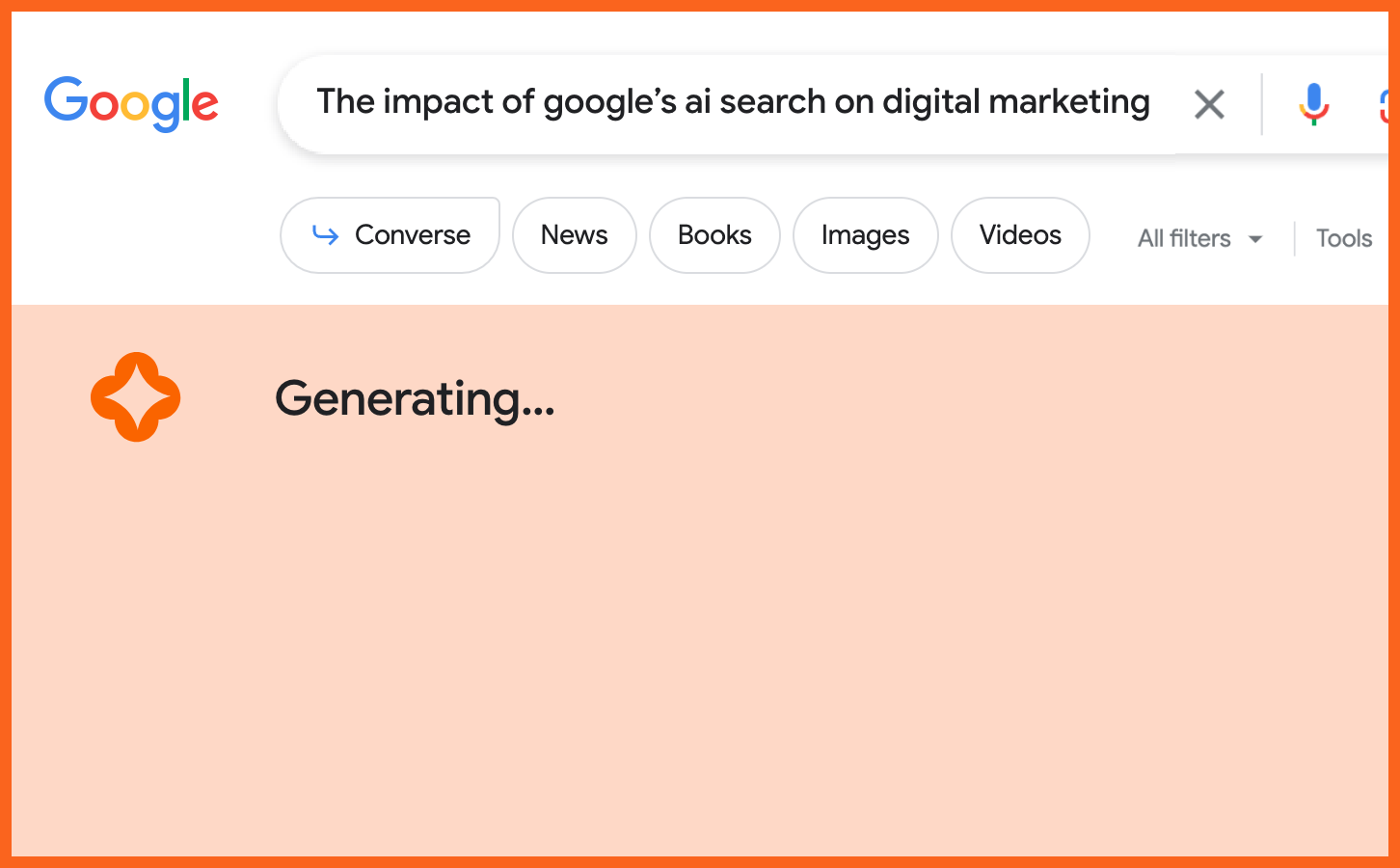Online search has begun its next evolution. Google has officially started experimenting with their new Search Generative Experience (SGE) that uses AI to provide users with more detailed answers to search queries. At this time, the SGE is only available to users who sign up for their wait list, but once released to the public, the way consumers use online search will be changed forever—which is exciting for the consumer experience, but what does it mean for the healthcare marketer?
Let’s start with a brief overview of Google search and what this new SGE is. In 2014, Google introduced a new feature called “featured snippets” which are those boxes that appear towards the top of the search engine results page (SERP) and provide a quick answer to a search query. These boxes work by Google pulling information from one of the top ranking pages for the specific search. The introduction of featured snippets and other SERP features created the dilemma of zero-click searches, meaning users were able to get the information they needed by simply searching a question and not having to visit any specific web pages. SEMrush found that as many as 57% of users on mobile and 53% on desktop don’t click an organic or paid result.
Naturally, these SERP features didn’t paint the whole picture because the information was pulled from a singular website and users were left wanting to learn more. Now, Google is working to fix that problem with SGEs. SGE is similar to the feature snippet, but through AI integration, users will get more detailed answers with information pulled from multiple of the top websites to provide a more in-depth, well rounded response. If users have more questions on their topic of interest, they can easily ask a follow-up or enter Google’s conversation mode and chat with Google to find more answers to further questions without having to click on a single link.

Google says they aren’t ignoring the need for businesses to create digital demand. They say, “we’ve designed these new experiences to highlight and drive attention to content on the web, making it easy for people to dive deeper on the topic they’re learning about. As we bring generative AI into Search, we’re committed to continue sending valuable traffic to sites across the web.” While searching, they allow you, “to evaluate the information for yourself, you can also expand your view to see how the response is corroborated and click to go deeper.” Which is all great news if users choose to search that way, but how do you adjust your digital marketing strategy to get more customers from Google’s newly designed experience?
Ads are still going to be an effective way to reach consumers and may arguably become more valuable now that zero-click search is projected to increase. Google currently makes 58.1% ($162.45 billion) of their revenue through ads so they won’t be doing anything to scare away advertisers or hurt ROI. Marketing expert, Neil Patel, suggests, “as people start getting more specific with their search queries as the new version of Google should in theory provide better responses and results, it should actually increase the conversion rate for paid ads. It’s why marketers target long-tail phrases in the first place.”
But part of the beauty of SEO is being able to reach target audiences organically and not spend thousands of dollars on ads. So, what will organic SEO look like with SGE? SGE is an intelligent algorithm that gets to know the user on a very personalized level. It will understand the context and intent of each query, the buying history and pain points of each individual and provide responses based on these factors.
Because the algorithm is getting personalized, websites are going to have to do the same. High quality content that closely matches consumer intent is the best way to increase traffic to websites through search. Adding blogs, videos and images to your website that answer specific customer questions will help get the AI’s attention when putting together an SGE. You know some of the basic questions dermatology consumers tend to ask, but what are the niche questions you can answer that can result in more traffic to your website? Play around on Google by searching common queries and digging through the “People also ask” section to try and find ideas for more specific content. For example, if I search, “what is it like to get botox” and continue looking through the suggested questions from Google, I notice there’s a trend of asking about lines, like bunny, marionette and glabellar lines. So, I can take that topic and create a short video or a blog with before/after images that talk about the different lines botox can treat. Not only would this piece be good for those searching for botox, but it will also be valuable to those who are searching for treatments to specific lines.
In some cases, local search will also be getting a facelift for applicable SGEs. At this time, local search hasn’t changed for every industry including healthcare, but eventually SGE will allow customers to be hyper-specific with searches.
Just because local search is changing in some industries and holding on others doesn’t mean local search optimization should be ignored. This is still one of the most effective ways to attract new customers to your practice and if you need help optimizing your Google Business Profile (GBP), get our checklist.
While SGE isn’t available to the public yet (there’s no consensus on when), it’s best to start preparing now. As a brick and mortar business who relies on getting new customers in the door, SGE will not have a drastic effect on your marketing strategy, but making little adjustments can go a long way. Optimizing your GBP and the content on your website and social media, and building a strong digital presence is still the best way to organically grow your customer base. If you want to learn more about how to do this, read our e-book.

